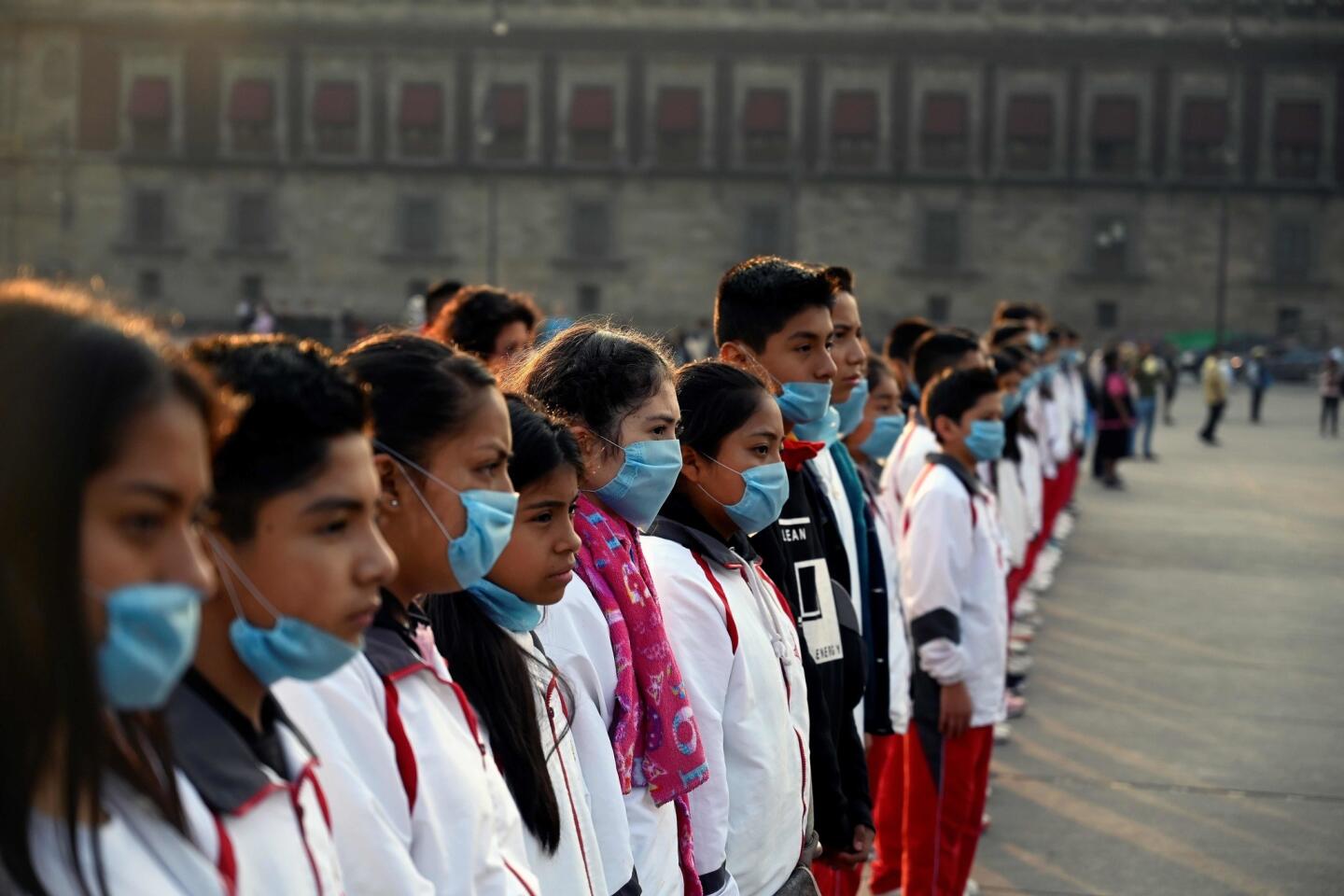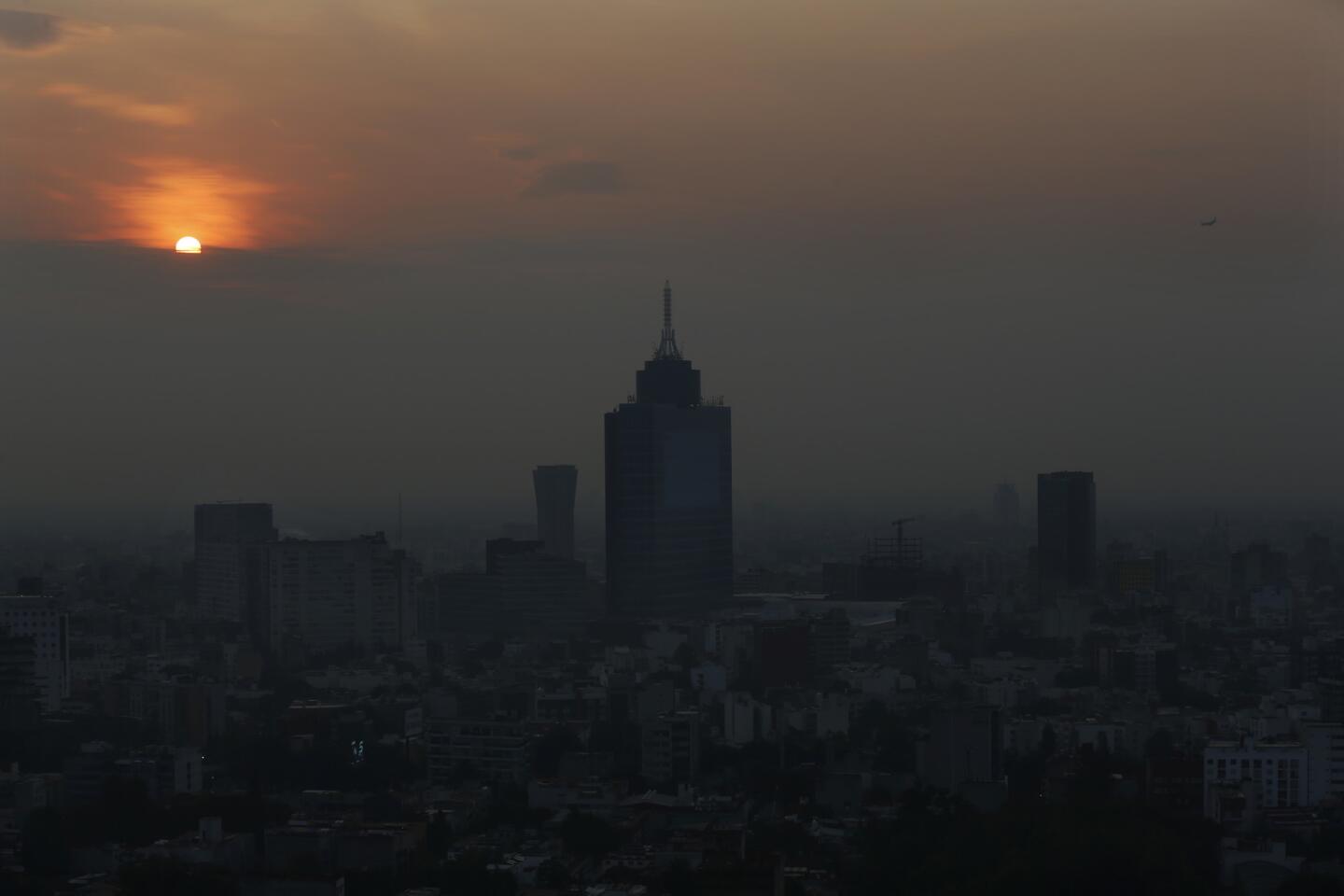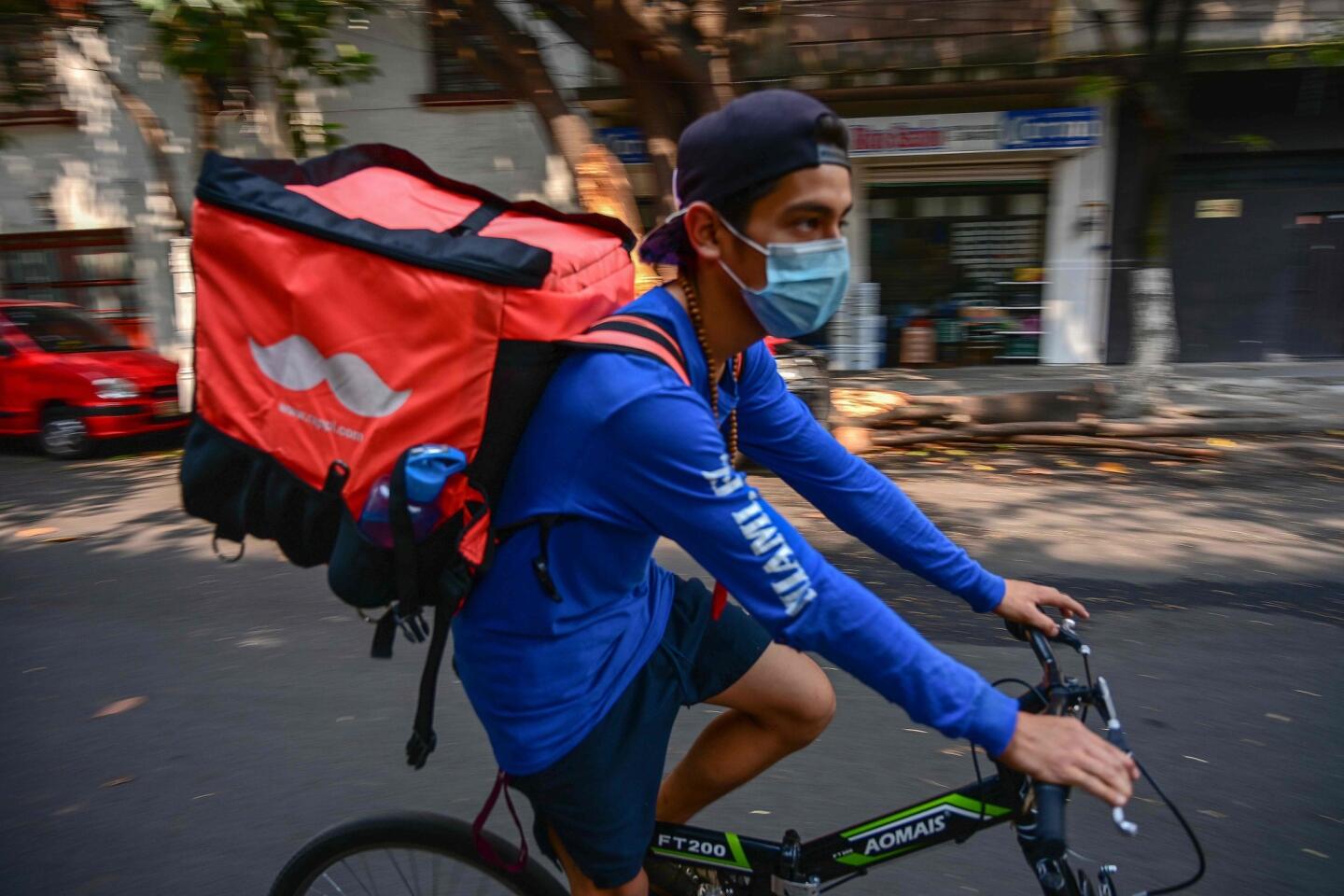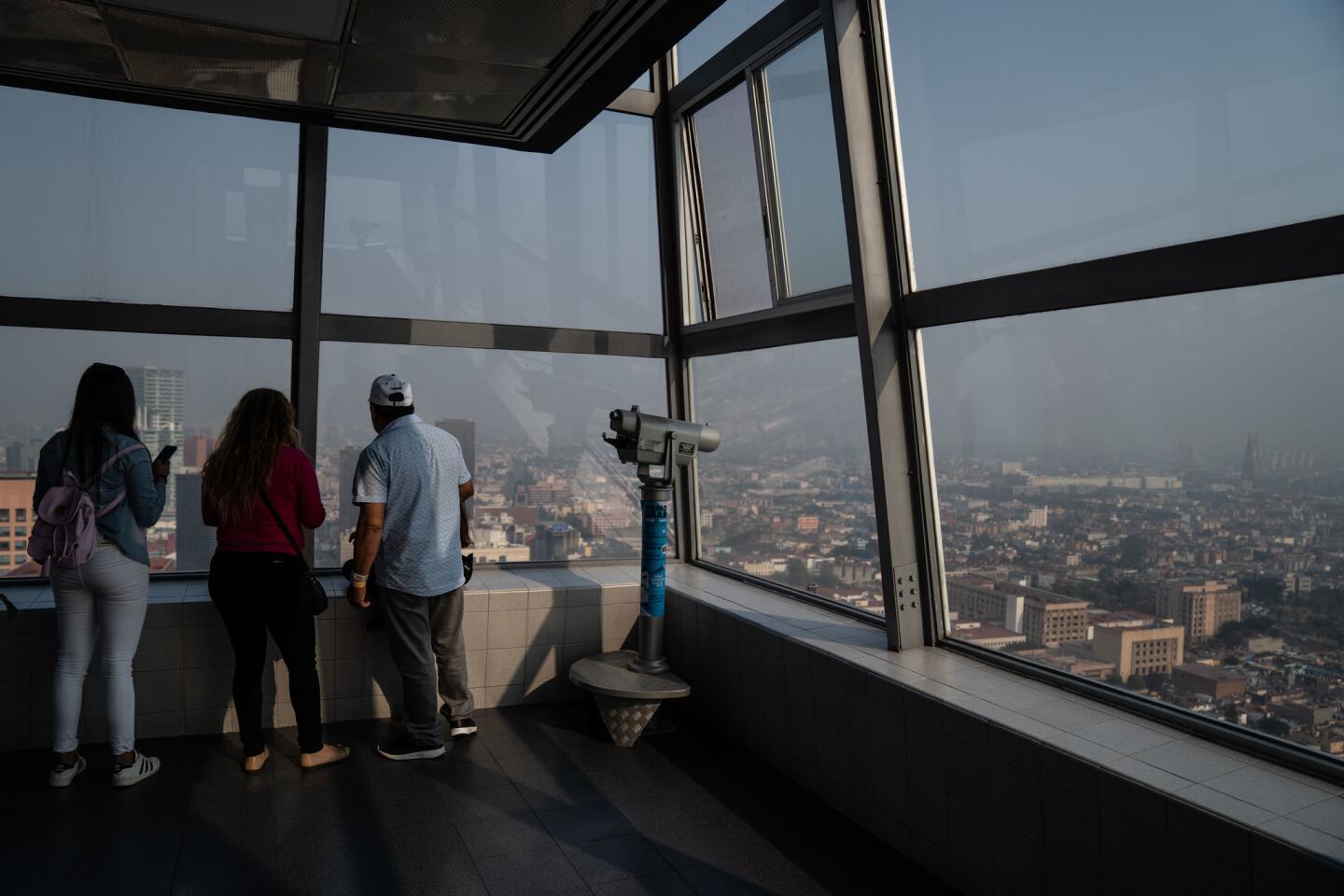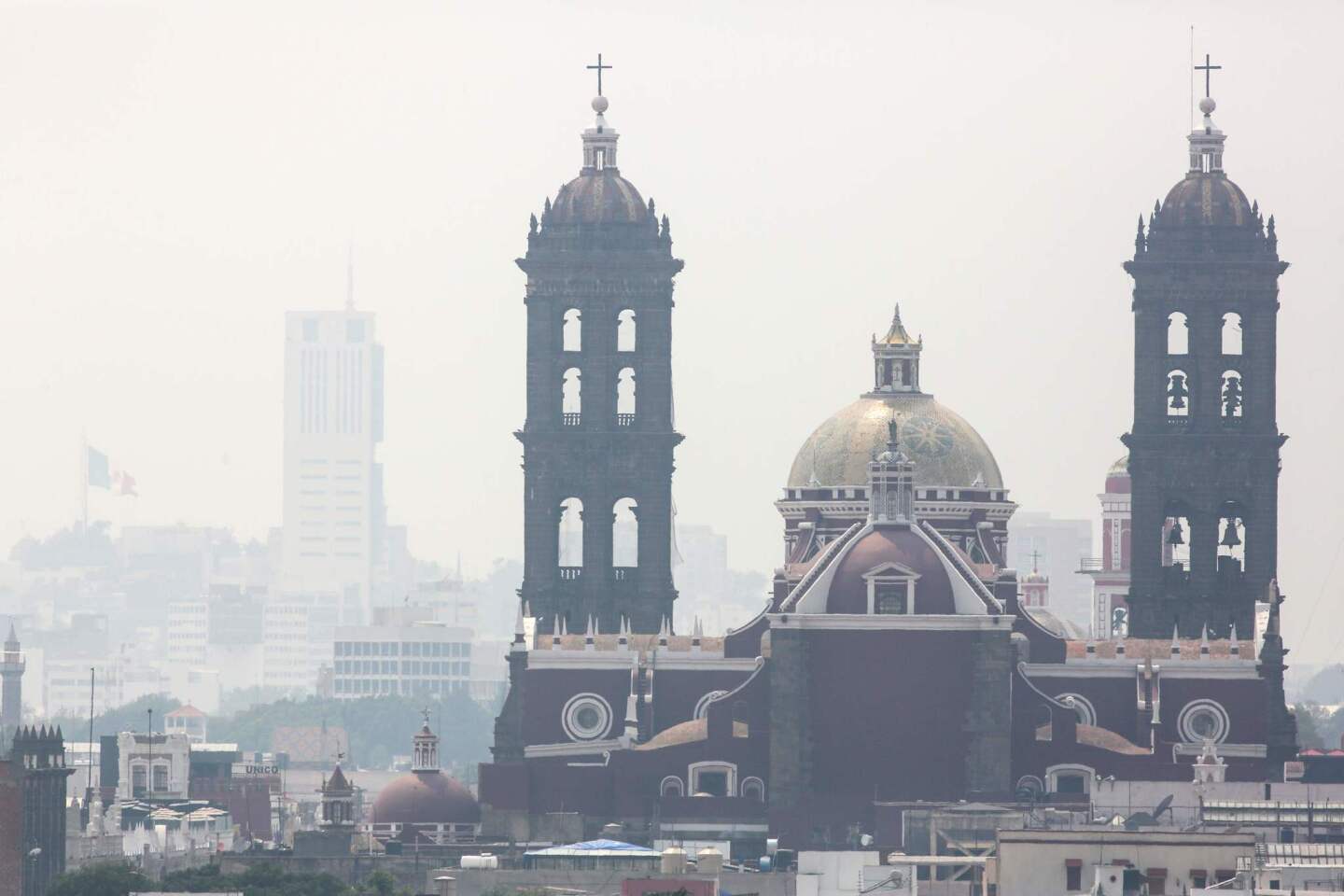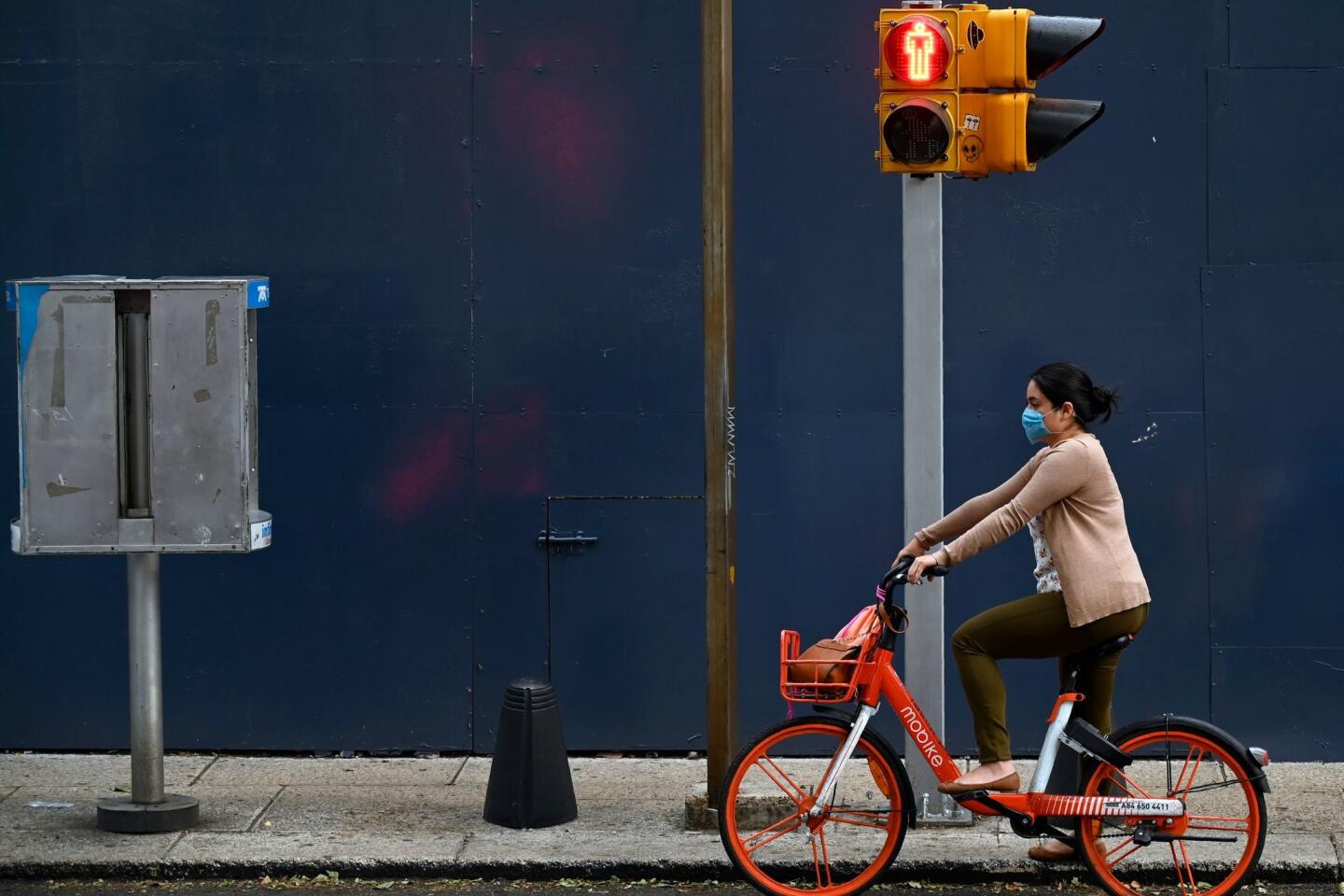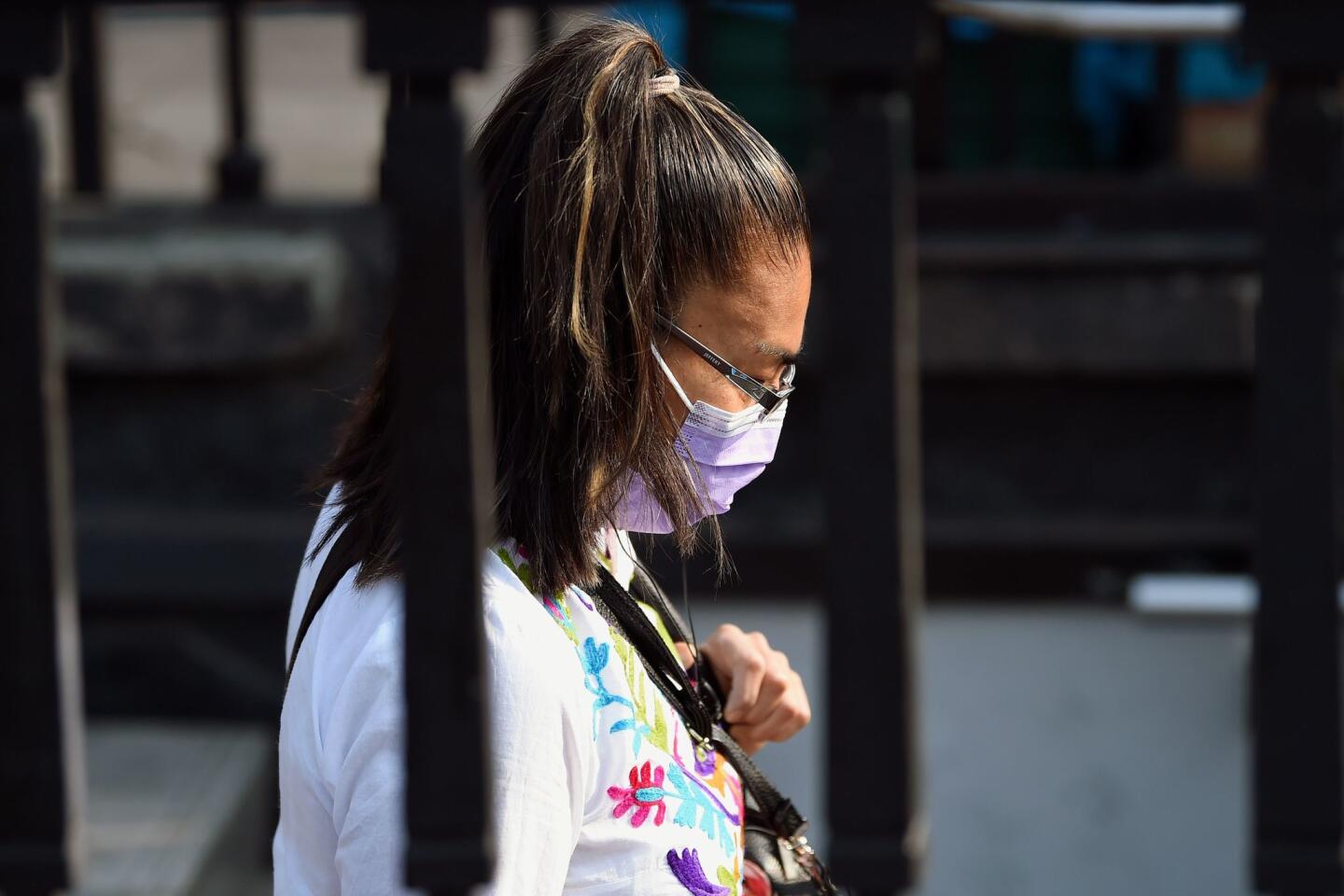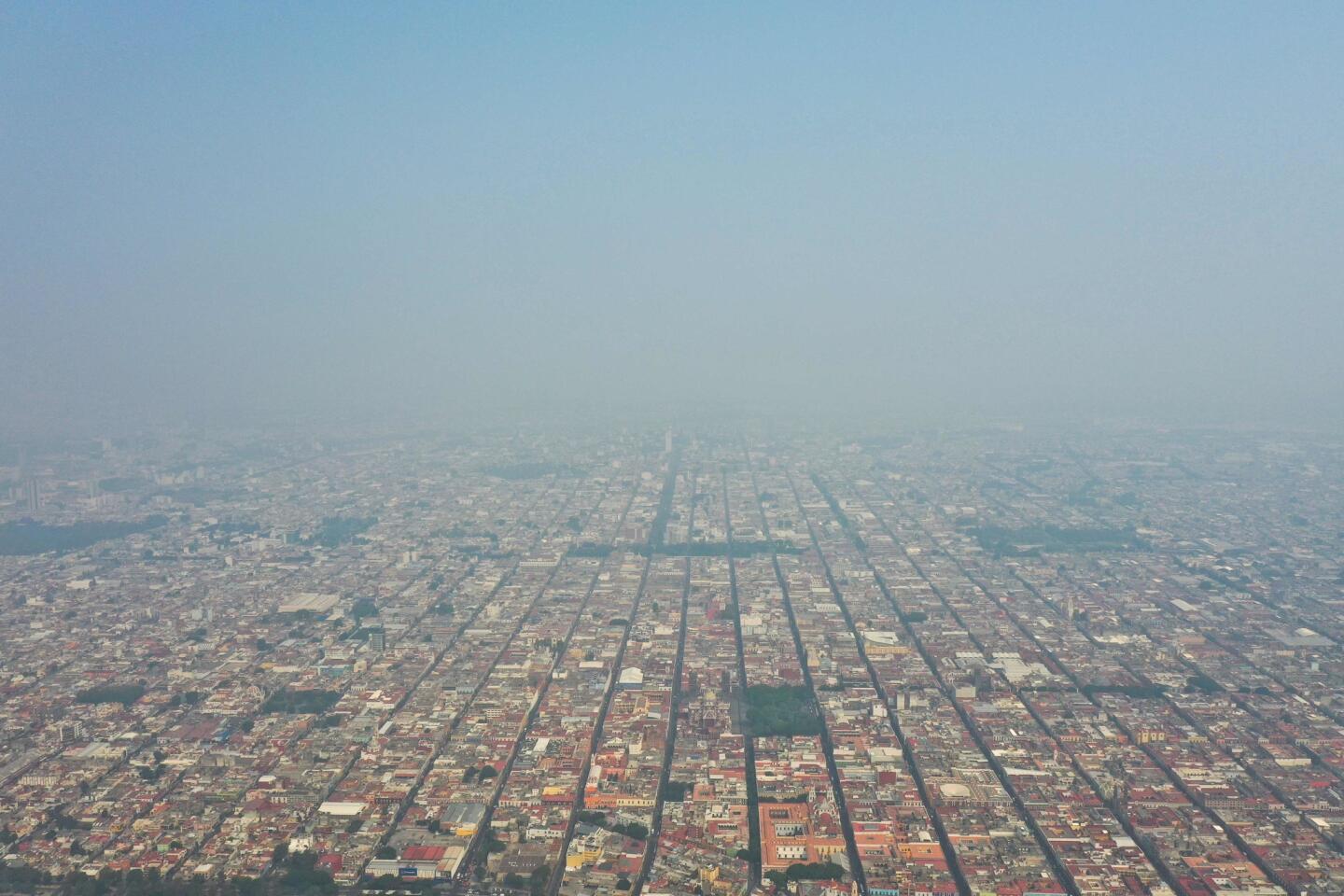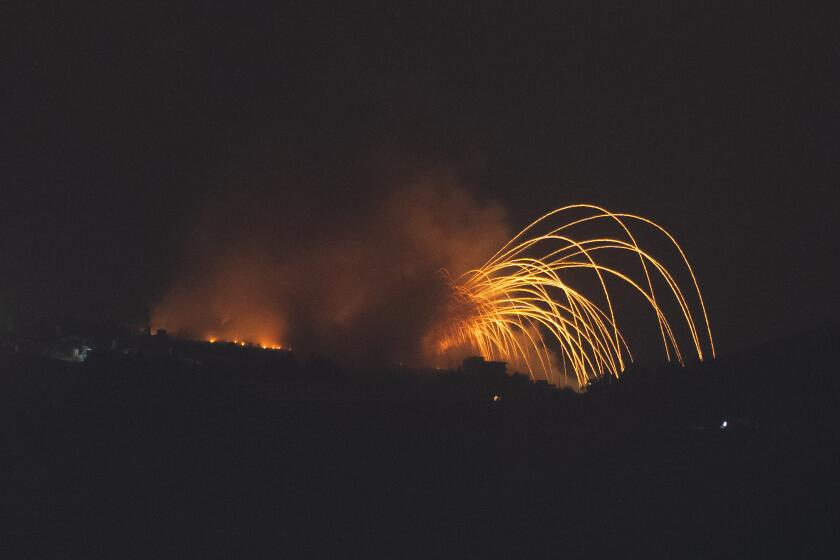Smog chokes Mexico City as fires fan pollution
Reporting from Mexico City — A smoky haze that has blanketed this capital for the past week is fraying nerves, spurring health worries and generating criticism of elected officials.
Authorities ordered Mexico City schools closed Thursday and Friday and urged people to stay indoors, as the photochemical miasma enveloping the metropolitan area, home to more than 20 million, failed to disperse.
Professional soccer games and other outdoor events were canceled as part of an emergency decree imposed on Tuesday, and the city government set driving limits to curb the number of vehicles in circulation. Many pedestrians and cyclists donned surgical masks.
The month of May, before the onset of summer rains, traditionally brings the worst air quality of the year to Mexico City, which lies in a high-altitude valley where vehicular and industrial fumes are trapped. A heat wave and sparse winds have made things worse.
This year, however, authorities say fires raging outside the city have exacerbated the problem as smoke has converged above the city and environs, mixing with a toxic brew of contaminants. Measuring stations have found dangerously high levels of tiny particulates, viewed as especially hazardous because they can damage people’s respiratory and cardiovascular systems.
“The officials say, ‘Don’t leave your homes,’ but that’s easy for them to say,” said Sofia Arredondo Lopez, 39, an architect, who was among many perturbed residents interviewed in recent days. “We have to leave to go to work. I worry about going out with this gray blanket covering the city, but telling us not to leave home is not a solution.”
The lingering smog has been a reminder of the late 1980s and early ’90s, when Mexico City residents experienced what was labeled the world’s most polluted air.
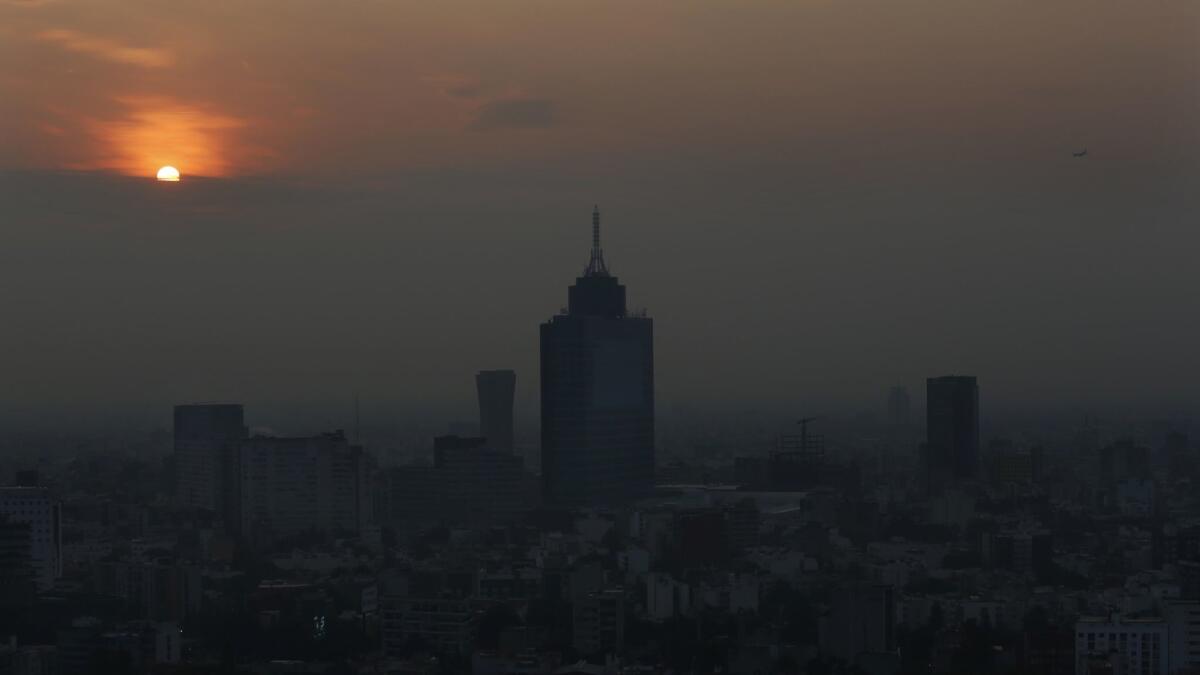
In recent decades, however, controls on emissions and limits on automobile traffic have improved matters, and levels of air pollution in cities in Asia and elsewhere have surpassed those generally found here.
But prolonged bouts of smog in recent years have fanned fears that authorities haven’t followed up on the city’s initial success in curbing contamination, even as the number of vehicles grows inexorably. This week’s haunting images of a city shrouded in a thick haze have reinforced the notion that things are getting worse, not better.
“On Sunday, I went out with my kids to downtown and it looked like the apocalypse,” said Maria de los Angeles Cabrera, 41. “It was midday and the city looked gray, dark, with a burnt smell. Our eyes were tearing.”
Many see corruption behind the surfeit of buses and other vehicles that belch toxic emissions into the air, apparently in flagrant violation of controls. Critics argue that officials fear a political backlash from industry and motorists should lawmakers advocate tougher emissions standards.
The government hasn’t shown sufficient political will to take unpopular steps to reduce pollution, Adrian Fernandez, a climate scientist and advisor to a regional environmental commission, told El Universal newspaper.
Many Mexico City residents, who are generally dubious about their political leaders, have been quick to blame a lack of official action for the smoggy haze.
“I’m very mad because if the government had acted rapidly we wouldn’t be like this, everyone choking in these clouds of dirt,” said Armando Diaz Robles, 54, a street vendor whose business suffered as many people stayed home. “Why did the authorities wait so long to react? Because they are inept!”
Much of the criticism has been directed at Mexico City’s mayor, Claudia Sheinbaum, a scientist who took office last December after previously serving as the city’s environmental chief. Sheinbaum, a close associate of Mexican President Andres Manuel Lopez Obrador, himself a former Mexico City mayor, has pushed back against charges of inaction, vowing to do whatever is necessary to improve air quality.
In coming days, Sheinbaum said in a video posted Friday on Twitter, the government would be making “very important announcements” aimed at transforming Mexico City into one of the places “best prepared for environmental contingencies,” but she provided no details. The mayor also lifted emergency restrictions, such as limits on driving and on outdoor activities, in anticipation of improved weather conditions this weekend.
Many are skeptical, however, that the government will act with sufficient urgency to curb a problem that many see as worsening. Discussion of air pollution tends to diminish as summer showers cleanse the skies, providing occasional glimpses of the snow-capped volcanoes, Popocatepetl and Iztaccihuatl, that frame the Valley of Mexico.
“The contamination makes us sick and, eventually, it’s killing us,” wrote columnist Humberto Musacchio in Mexico’s Excelsior newspaper. “We should not have to wait until people fall dead on the streets.”
McDonnell is a Times staff writer and Sanchez a special correspondent.
Twitter: @PmcdonnellLAT
More to Read
Sign up for Essential California
The most important California stories and recommendations in your inbox every morning.
You may occasionally receive promotional content from the Los Angeles Times.
